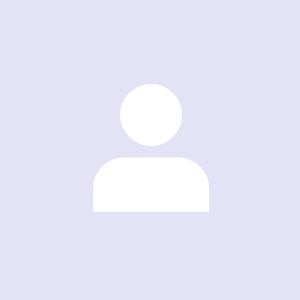Why people love ipassio?
World-class masters as teachers
Personalized & Interactive 1-on-1 classes
Course studio that amplifies learning
Access to the global creative community
Pay as you go - 2 classes at a time
World-class masters as teachers
Personalized & Interactive 1-on-1 classes
Show more
Explore Online Music Theory Courses

Our Happy Learners

Real Progress, Real Impact
Let’s celebrate passion learning
About Online Music Theory Lessons
Best way to learn music theory?
Whether learning on your own or with additional help, you can start learning music theory with sessions on beginning harmony and music appreciation. Then you may move on to reading about intervals, scales, modes, and diatonic structures. Moving ahead, different types of chords will be taught- major, minor, augmented and diminished. While reading about it, make sure you personalize each topic according to your own style. Only when you practice the theory while you learn, you completely understand the concept. As you are learning this, train your ears to understand these nuances when you hear them. Reading books and online notes can definitely get you to learn music theory the way you like. But as history shows, it's a time-consuming path. This is where a teacher can help you fasten the learning process. There will come occasions when you'll be spending a considerable amount of time looking for answers. This is when you should ideally start learning from a music teacher.
Why music theory courses from ipassio?
Trying to learn music theory all by yourself can get tiresome after a while. In such a point, professional music theory teachers can help you fasten the learning process. Music theory is much larger than reading music or knowing when to play scales. Teachers at ipassio are committed to creating custom lesson plans for each student based on their level of skills and knowledge. Our teachers will help you relate the theoretical ideas to what you are playing. If you're learning music theory so as to appear for grade certifications at the London School of Music or any other music college, a special training plan will be made for you. You get access to all these classes at the comfort of your home via video conferencing tools. As and when required, teachers will also provide pdf and video lessons to students if deemed necessary.
Topics to be covered
You’ll begin with the very basics of music theory- music alphabets. They are as follows, A, B, C, D, E, F, G - The 7 basic notes. Moving on, major and minor scales are covered. Some of them are major and minor pentatonic, melodic major scale, harmonic major and minor scale, natural minor scale, melodic minor scale. When it comes to intervals, they can be horizontal, linear or melodic. The teacher will then go ahead with teaching chords and key signatures. You will learn about polytonalism, quartal harmony, wacky key, and time signatures. Students will also learn about accidentals, intervals, arpeggios, ostinato, musical vocabulary and symbols, a circle of 5ths, and answering a given rhythm. Since listening to music is a big part of reading music, analysis of simple musical pieces are also covered in depth.
Music theory for dummies
For an absolute beginner to music theory, some of the things to accomplish are as follows. Starting with the basics: The Staff, Clefs and ledger lines. Moving on to the five types of notes and how flags affect music duration. You may further read about time signatures and rest duration, which will be followed by different types of accidentals. You’ll learn how to construct the major scale and three different types of minor scale. Following which you may learn about generic intervals, specific intervals and also how to write them. An introduction to chords would include the four types of triads and five types of seventh chords. You could learn music theory on any instrument, but most opt for either piano or guitar.
Popular categories:
Drawing, Keyboard, Bass, Piano, Sculpting, Veena, Salsa, Konnakol, Ukulele, Commercial Music, Trumpet, Spanish, Odissi, Hindi, Portuguese, Ghazal, Harmonium, Pop, Photography, Gujarati Singing, Crochet, Multi-Cuisine, Kathak, English, Sufi Music, French, Kanjira, Sarod, Trombone, Western Classical Music, Acting and Theater, Italian, German, Painting, Sketching, Slide Guitar, Banjo, Indian Cuisine, Accordion, Mohiniyattam, Guitar, Bollywood Dance, Mridangam, Carnatic Vocals, Sitar, Bollywood Singing, Vibraphone, Ghatam, Yoga, Bassoon, Drums, Violin, Calligraphy, Mandolin, Saxophone, Western Singing, Hindustani Vocals, Jewellery Design, Bharatanatyam, Harmonica, Rabindra Sangeet, Electric Bass, Cello, Sanskrit, Santoor, Acrylic Painting, Tabla, All Singing Styles, Flute, Harp, Double Bass
Major cities our students come from :
United States of America : New York, Los Angeles, Fremont, San Jose, Santa Clara, Chicago, Houston, Philadelphia, Phoenix, Dallas, Austin, Denver, Seattle, Detroit, Washington, Boston, Memphis, Nashville, Portland, Las Vegas, Sacramento, Colorado Springs, New Orleans
United Kingdom : London, Birmingham, Leicester, Slough, Leeds, Manchester, Glasgow, Liverpool
India : Bengaluru, Pune, Mumbai, Kolkata, Delhi, Patna, Hyderabad, Chennai, Jaipur
While the practical lessons help in skill building, music theories are educative about the background history and evolution of musical concepts. It helps us know the story behind a particular concept and why we render it that way. And thus it quickens our learning process and enhances improvisational skills.
It’s good that you know how to sing and play musical instruments. However, studying music theory will enhance your musical skills. You will be in a position to introduce a melodic piece before staging a performance. You will be able to make your recitals informative and engaging for your listeners.
In the music theory classes, the students are taught about the science behind each musical concept. Where and how did they originate and how do they impact the way music is rendered? Also, students learn to read and write staff notations, time intervals, rhythmic structures, scales, pitches, and much more.
Yes. Music theories can be learned as an add-on to a vocal or instrumental course.
Usually, the classes are held once a week for 24-30 weeks at a stretch.
The duration of the classes could be anywhere between 30 minutes to an hour.
Additional Resources
How ipassio works?

Pick your passion
Ranging from music to creative arts, pick what you love!

Interact with an expert
Connect with your teacher over a free 1-on-1 video call to discuss your learning goals.

Set session schedules
Get session schedule matching your timezone

Pay as you go
2 classes at a time, with no long-term commitments.
Start with a free meeting now!
Pick a Course

Student
Teacher
Download our app and get going with your passion.
Get easy access to the pool of world-class educators, enthusiastic learners and everything exciting!
- Explore hundreds of courses from 400+ teachers
- Enroll easily into the course of your choice
- Mark attendance for every class you have completed
- Buy and refill classes with ease
- Schedule classes as per your availability
- Teachers can easily withdraw their fees











